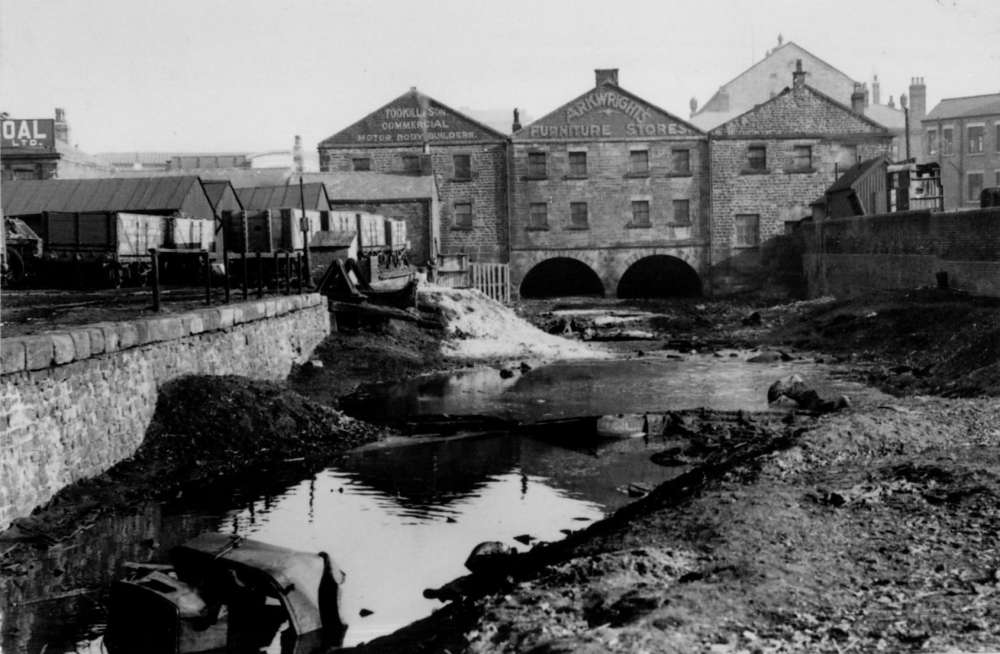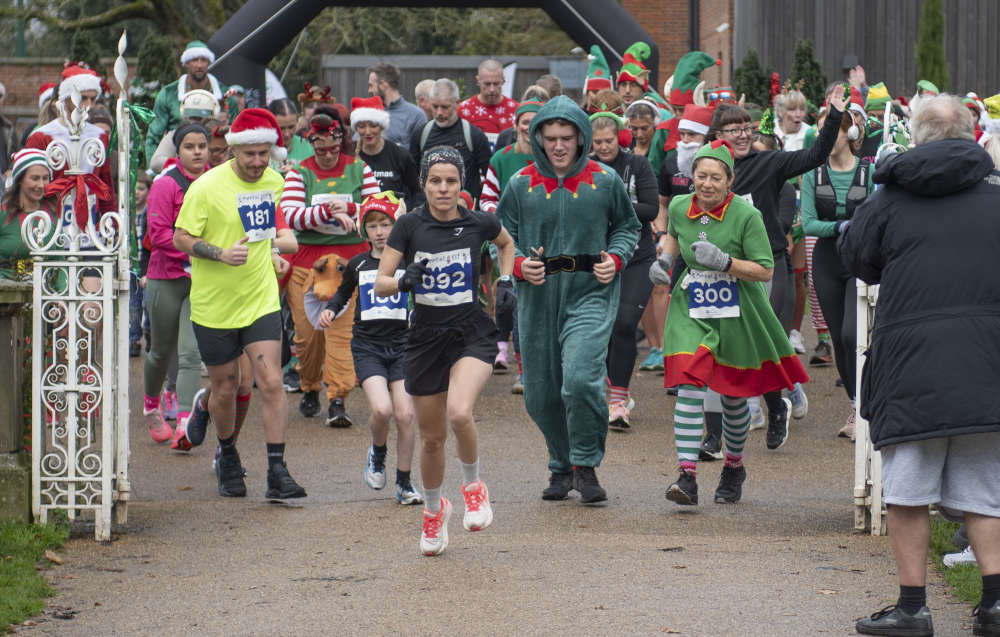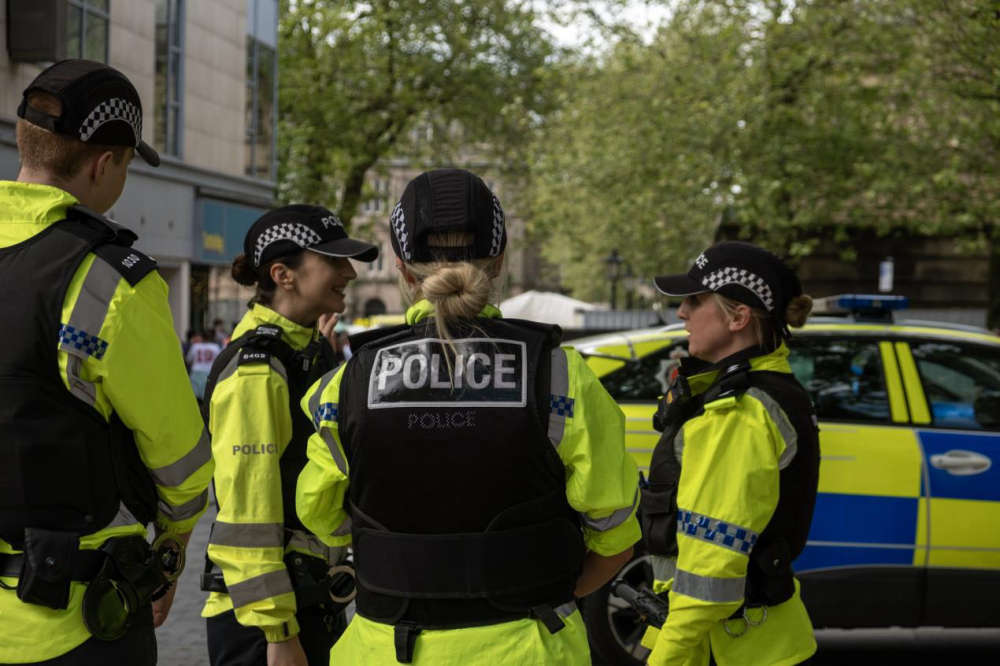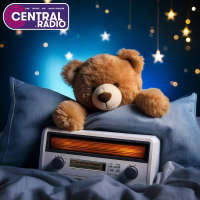
A major part of Preston’s past could be uncovered to create a new wetland and green space in the heart of the city.
That is the hope of the man leading a campaign calling for the restoration of the area known as the “Preston Basin”.
The site – which now lies beneath the car park of the retail units on the corner of Corporation Street and Ringway – was once part of the Lancaster Canal at its terminus in Preston.
Urban planner Daniel Crowther last year unveiled his vision for the once bustling waterway which was buried when it was filled in just before the outbreak of the Second World War. By that point, the use of canals to transport goods had collapsed.
Now, the born-and-bred Prestonian has enlisted the help of urban design specialists to demonstrate how the reclaimed plot – which sits in front of shops including Poundstretcher and Abakhan – could look as part of a wider transformation of the area.
“We’ve created a blended space – so at the western end, you’ve got this wetland area with boardwalks and then further east you can have an open space for people to relax, with terrace seating, south-facing towards the sun.
“A key theme is the multifunctionality of the site – repurposing this historic basin [as] a 21st-century recreational, amenity and biodiverse space that has something for everyone.
“It’s something that could really draw people back to that part of Preston and create some sort of focal point – not only for people, but for nature,” explained Daniel, who will be giving a presentation on the proposal at a meeting of the Preston Historical Society next month.
The blueprint was inspired by the publication, two years ago, of ambitious plans to regenerate the area around Preston station.
While much of the attention surrounding that long-term scheme has focused on the eventual demolition of Fishergate Shopping Centre and its replacement with a new office, leisure and retail development, the Preston Station Quarter Regeneration Framework also extended to the Corporation Street corridor.
It sought to create a ‘University Walk’ by developing the area between Fishergate and Heatley Street to create a “seamless, high-quality urban environment that forms a strong relationship between the station and University of Central Lancashire”.
Daniel believes giving the Preston Basin a new lease of life chimes with that broader aim. He also sees it as an opportunity for a key aspect of the city’s history not just to be revealed – but revelled in.
“This site is Preston’s story, really – thousands of people, directly and indirectly, were involved in the building, planning and the working of the canal when it was open. It’s a shared history and heritage that should be passed down and recalled [as part of] any restoration project,” Daniel says.
He also draws a contrast between the carbon generation that resulted from the basin’s original use – as a route by which thousands of tonnes of coal was delivered each week – and its potential to be resurrected as an environmentally friendly carbon store.
Daniel says such “cues from history” are amongst the main selling points of the proposed scheme, which he hopes will persuade the local authorities leading the station quarter regeneration plans to back it.
“As planners, our job is to [consider] the bigger picture and link these developments together and see how they can complement one another.
“With the East Cliff Vicars Bridge cycle path just about to open and the Old Tram Bridge being replaced, you’re going to have a lot more footfall and cycling possible between South Ribble, Avenham and Miller parks, the railway station, Fishergate and Corporation Street. So you have this great opportunity to start threading together those sites with the Preston Basin.
“My interest is just in creating places from neglected spaces,” Daniel adds.
WANT TO FIND OUT MORE?
The campaign to reopen Preston Basin will be the subject of a presentation to the Preston Historical Society on 9th September at 7.15pm. It will be held at the Central Methodist Church, on Lune Street – and details of how to obtain tickets can be found at prestonhistoricalsociety.org.uk
BIG JOB BREAKING OUT?
Daniel Crowther says the idea of restoring Preston Basin is sometimes met with fears it would be a “massive undertaking”. However, it is not a characterisation of the proposed project that he recognises.
The basin measured 300 ft by 60 ft and, together with a 161 ft-long section of recovered Lancaster Canal, would be big enough to form a “ready-made footprint” for the scheme, he says.
“It’s not particularly large – and it also doesn’t necessarily need to be excavated to its full depth.
“It could be undulating, so you could excavate to certain depths at certain stages of the basin – and you might not necessarily need to excavate it at all. You could, if you wanted, mark it out by [using] inlay sets above ground,” Daniel explains.
The Local Democracy Reporting Service approached Lancashire County Council – which, together with Preston City Council and UCLan, is behind the Preston Station Quarter Regeneration Framework – for comment on the basin proposal.
‘BE CONFIDENT, PRESTON’
The combined ‘blue-green’ wetland and grassland vision for Preston Basin has been drawn up by design practice and thinktank Create Streets.
Its chair, Nicholas Boys Smith, is urging the local authorities and landowners whose support would be needed to realise the plans to “have the confidence and imagination to adopt them”.
He also says changes to the economy, prompted by the onset of the pandemic, mean the places that are now destined to thrive will be those in which people want to “live, work, meet others, raise families and pass their time”.
“Most of us need to tell stories about ourselves and the places we inhabit and so the most successful places are not just green and beautiful, but also in communion with their past, so as to be able more confidently to look to the future.
“The Restoring Preston Basin campaign and concept is a marvellous vision to breathe fresh life into Preston, proud of its past and moving into a green and sustainable future,” Mr. Boys Smith said.
HIDDEN HISTORY
Preston Basin came into being in 1804 as a three-quarters-of-a mile extension to the 42-mile Lancaster Canal, which had officially been opened seven years earlier.
The goods arriving in the basin – mostly coal from around Wigan and limestone from north of Lancaster, were ‘transhipped’ between the canal and its dedicated tramroad. The tramroad joined the two halves of Lancaster Canal’s ‘North End’ – which linked Preston and Lancaster – and its ‘South End’, between Walton Summit and Bark Hill near Wigan.
The Lancaster Canal, Preston Basin and the adjoining tramroad played a crucial role in the development and growth of Preston at the beginning of the 19th century. Once the basin opened, nowhere on the route of the canal grew as fast as Preston – and nowhere was as busy on the canal as Preston Basin.
However, competition for haulage business from the railways hit the canal and basin in Preston as hard as it did the canal network across the country – and the basin fell into disuse and began to be filled in from 1938.
Daniel Crowther is confident that stones dating back to the establishment of Preston Friary – at least 760 years ago – could be revealed by excavating the basin.
“When the navvies – the canal builders – cut Lancaster Canal, they cut through the remains. And obviously, back then, they weren’t too bothered. They just thought, ‘Oh, look – stones. We can just reuse them and save money.’”

 Hundreds help raise £21K in festive fun run to improve 'Mental Elf'
Hundreds help raise £21K in festive fun run to improve 'Mental Elf'
 Lancashire County Council appoints new women and girls' champion
Lancashire County Council appoints new women and girls' champion
 Lancashire residents asked for views on police funding
Lancashire residents asked for views on police funding
 Ashton-on-Ribble cafe running Christmas Eve soup kitchen
Ashton-on-Ribble cafe running Christmas Eve soup kitchen
 Phone boxes to stay in storage
Phone boxes to stay in storage
 Orthodontic changes planned across Lancashire
Orthodontic changes planned across Lancashire
 Lancashire Police issue warning to light fingered festive felons
Lancashire Police issue warning to light fingered festive felons
 Games area on Preston estate set for upgrade
Games area on Preston estate set for upgrade








